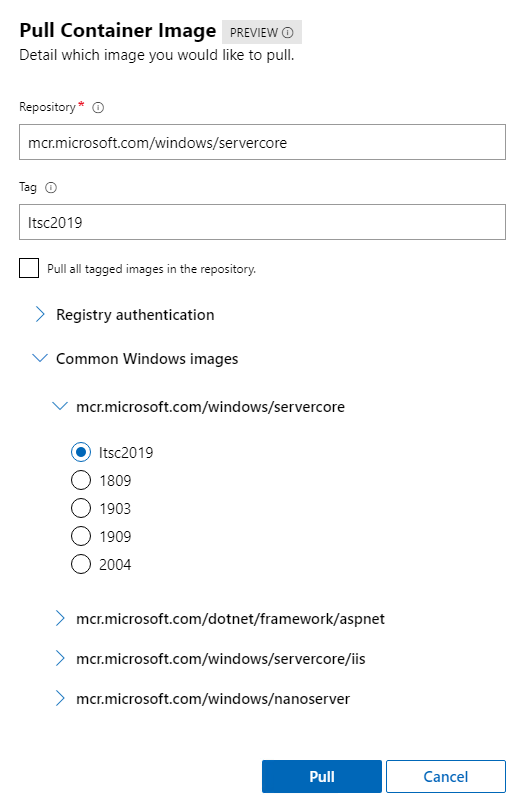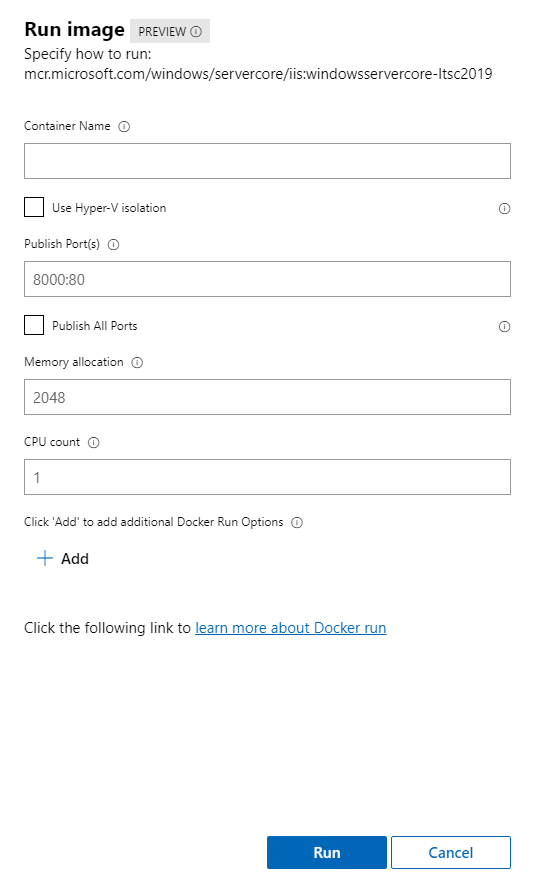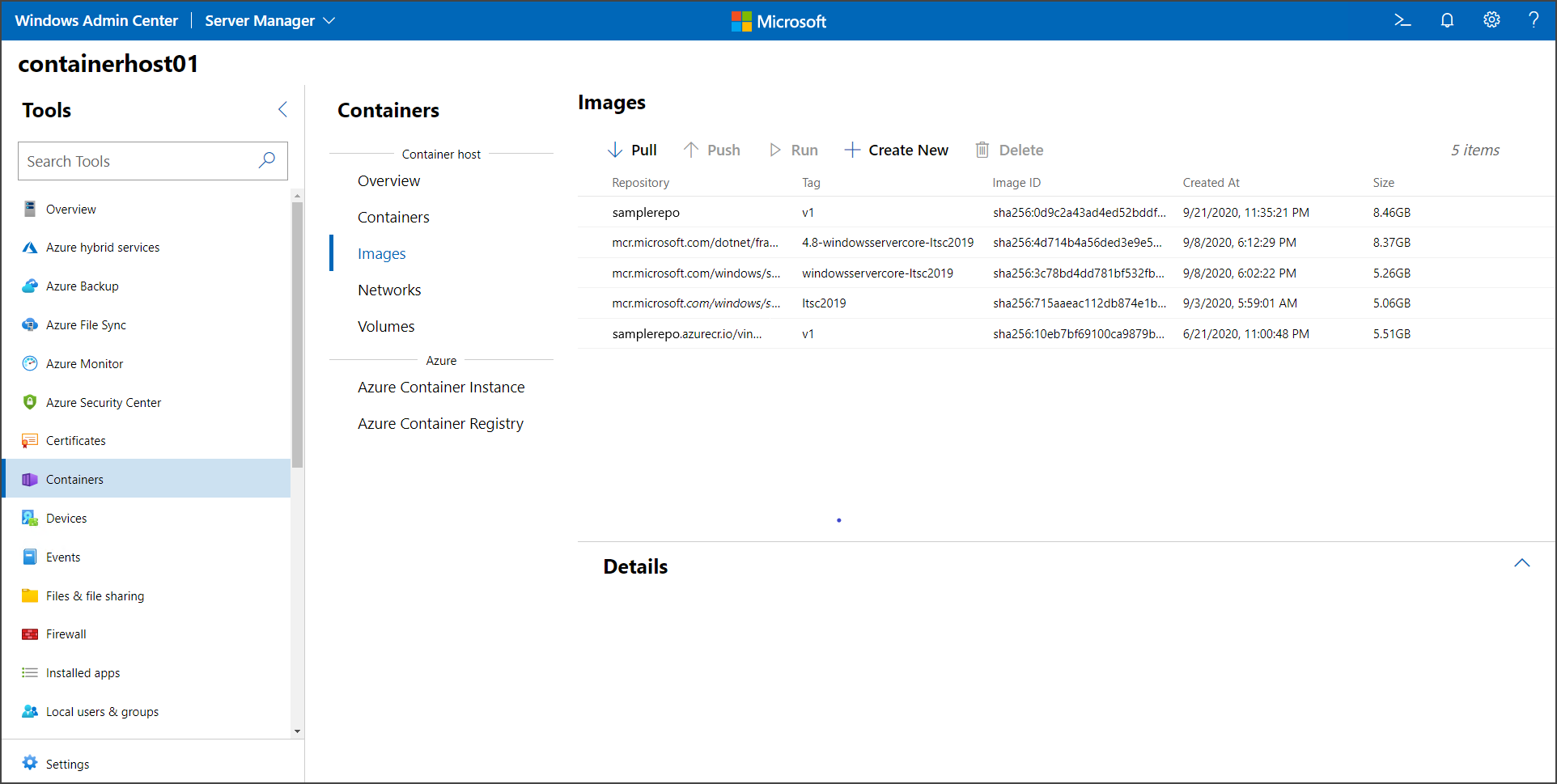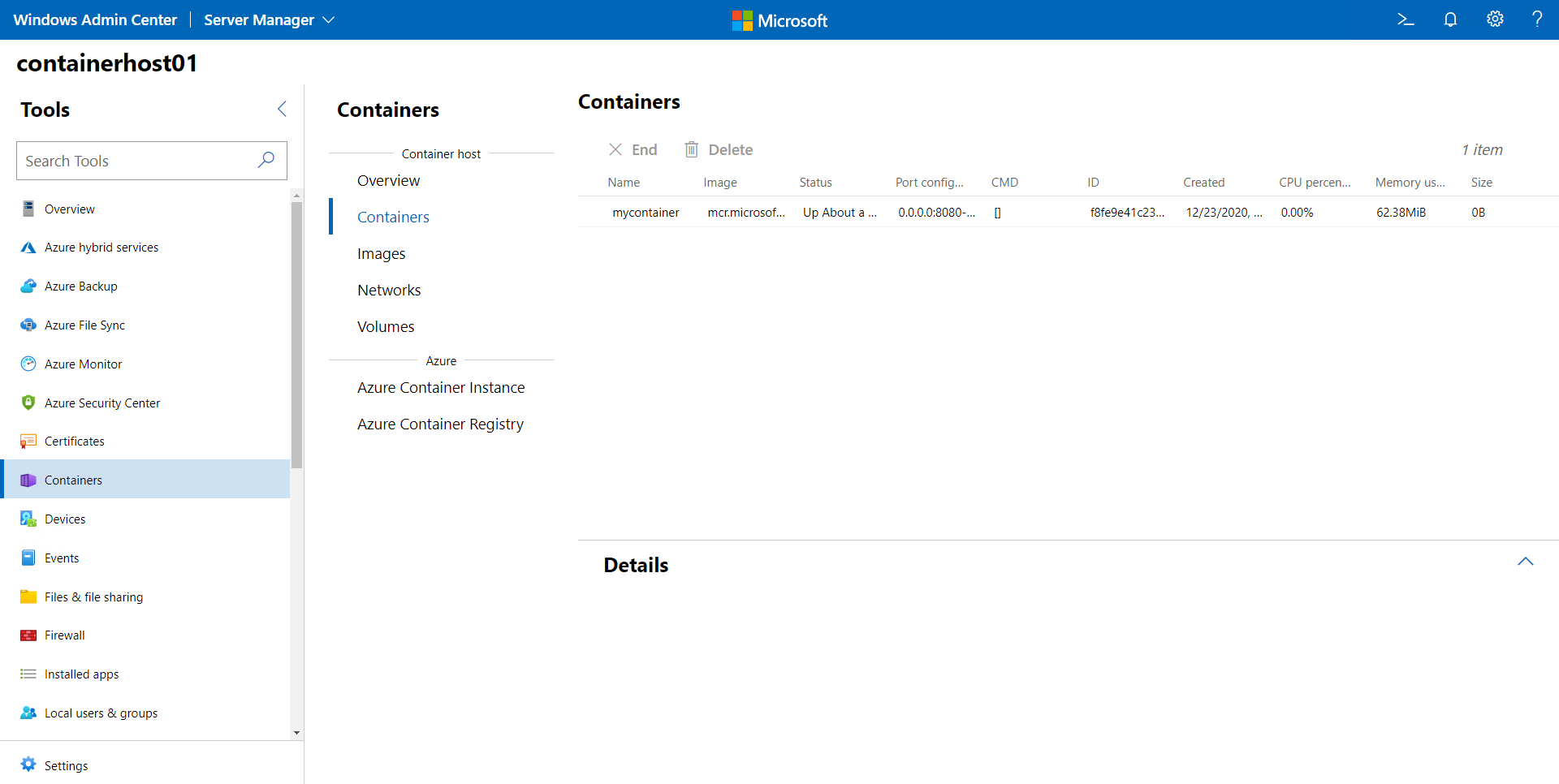Note
Access to this page requires authorization. You can try signing in or changing directories.
Access to this page requires authorization. You can try changing directories.
Applies to: Windows Server 2025, Windows Server 2022, Windows Server 2019, Windows Server 2016
This article shows you how to run your first Windows container, after you set up your environment as described in Get started: Prep Windows for containers. Running a container involves two general steps:
- Downloading a base image. With containers, the process of downloading a base image is known as a pull operation. The base image provides a foundational layer of operating system services to your container.
- Creating and running a container image that's based upon the base image.
Pull a container base image
All containers are created from container images. Microsoft offers several starter images, called base images, to choose from. For more information, see Container base images.
You can use the following procedure to pull the lightweight Nano Server base image, or in other words, to download and install that image.
Open a console window such as the built-in Command Prompt, PowerShell, or Windows Terminal.
Run the following command to download and install the base image:
docker pull mcr.microsoft.com/windows/nanoserver:ltsc2022While you wait, read the terms of the supplemental license for the image.
If Docker fails to start when you try to pull the image, the Docker daemon might be unreachable. To resolve this issue, restart the Docker service.
Tip
If you see the error message, "No matching manifest for linux/amd64 in the manifest list entries," Docker might be configured to run Linux containers instead of Windows containers. To switch to Windows containers in Docker, take one of the following steps:
- In the Windows system tray, right-click the Docker icon, and then select Switch to Windows containers.
- At a command prompt, run
& $Env:ProgramFiles\Docker\Docker\DockerCli.exe -SwitchDaemon.
Verify the existence of the image on your system by querying your local Docker image repository. You can perform this check by running the
docker imagescommand, which returns a list of installed images.Here's an example of output from that command, which shows the Nano Server image.
REPOSITORY TAG IMAGE ID CREATED SIZE mcr.microsoft.com/windows/nanoserver ltsc2022 4f0ead5b1b67 6 days ago 296MB
Run a Windows container
For this basic example, you create and deploy a Hello World container image. For the best experience, run the commands in this section at an elevated command prompt. But don't use the Windows PowerShell Integrated Scripting Environment (ISE). It's not suited for interactive sessions with containers—the containers appear to stop responding.
Start a container with an interactive session from the
nanoserverimage by entering the following command at a command prompt:docker run -it mcr.microsoft.com/windows/nanoserver:ltsc2022 cmd.exeThe container starts, and the console window changes context to the container.
Inside the container, run the following commands. The first command creates a text file that contains the phrase "Hello World!" The second command exits the container.
echo "Hello World!" > Hello.txt exitGet the container ID for the container you just exited by running the
docker pscommand:docker ps -aCreate a new
helloworldimage that includes the changes in the first container you ran. To do so, run thedocker commitcommand, replacing<container-ID>with the ID of your container:docker commit <container-ID> helloworldYou now have a custom image that contains the Hello.txt file. You can use the
docker imagescommand to see the new image.docker imagesHere's an example of the output:
REPOSITORY TAG IMAGE ID CREATED SIZE helloworld latest 81013d6b73ae 25 seconds ago 299MB mcr.microsoft.com/windows/nanoserver ltsc2022 4f0ead5b1b67 6 days ago 296MBRun the new container by using the
docker runcommand with the--rmoption. When you use this option, Docker automatically removes the container when the command,cmd.exein this case, stops.docker run --rm helloworld cmd.exe /s /c type Hello.txtDocker creates a container from the
helloworldimage and starts an instance ofcmd.exein the container. Thecmd.exeprocess reads the Hello.txt file and writes the contents to the console window. As the final step, Docker stops and removes the container.
Run a Windows container by using Windows Admin Center
You can use Windows Admin Center to run your containers locally. Specifically, you can use the Containers extension of Windows Admin Center for this purpose.
View container images
Open the container host that you want to manage.
In the Tools pane, select Containers to open the Containers extension.
In the main pane, under Container host, select Images.
Pull a container image
If your host doesn't have a base container image, select Pull to open the Pull Container Image dialog.

In the Pull Container Image dialog, enter the image URL and the tag.
- If you aren't certain which image to pull, expand Common Windows images to see a list of common images from Microsoft.
- If you want to pull an image from a private repository, expand Registry authentication to enter the credentials.
Select Pull. Windows Admin Center starts the pull process on the container host. When the download is complete, you see the new image on the Images tab.
Run an image
Select the image you want to run, and then select Run. The Run image dialog opens.

In the Run image dialog, enter information to configure the container, such as the container name, the isolation type, the ports to publish, and the memory and CPU allocation. You can also add options to append to the
docker runcommand, such as-vto specify a persistent volume. For more information about availabledocker runparameters, seedocker container run.Select Run. The Containers tab displays the status of the running containers.

